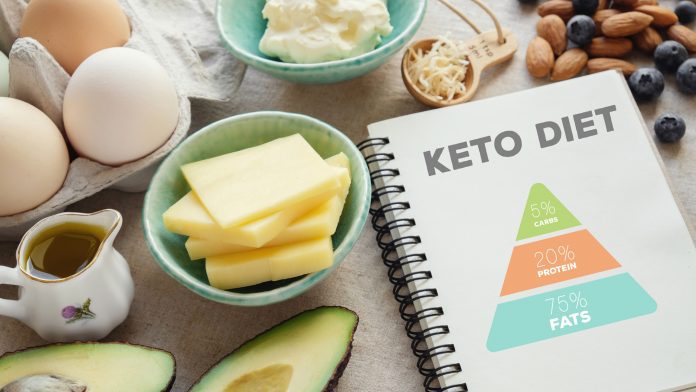
One of the most effective ways to promote healthy eating is to create company-wide initiatives. While it is important to set the tone at the top, a company should also ensure that their employees have access to fresh fruits and vegetables, and limit the amount of processed or sugar-laden foods and beverages. Employees should be offered healthy snacks as well as fresh water. Sugary beverages are as unhealthy and harmful as processed foods. Platforms for nutrition education and advice can be created by companies to encourage healthy eating habits. These platforms can be customized and provide personalized nutrition advice. Many companies offer group challenges that allow workers to compete against each another in order to achieve a goal.
To promote healthy eating, companies can organize cooking groups or hold dietary counselling classes. Or, employees could organize a luncheon where everyone brings a dish. They can also send intranet tips and emails weekly, which include nutrition information and recipes. Finally, catering can be provided at company events to promote healthy eating habits. For example, if an employee is attending a business conference, the company should provide a buffet table with nutritious dishes.
Schools can help students eat healthy by providing nutrition education. A school that is public can give tips about healthy eating during announcements. Cafeterias can be decorated with posters or decorations to promote healthy eating habits during lunch. One way to encourage healthy eating is to form a student organization. The school can request local graphic designers and artists to help create posters for the cause.

Companies can provide support to their employees by providing education and motivation. They can host events to celebrate the company's commitment to healthy eating. By encouraging employees to drink eight glasses of water a day, companies can encourage them to make healthier choices. Employers can make it easier for their employees to choose healthy foods and live healthier lives by offering fresh fruit and healthy vending options. A positive attitude towards fitness and nutrition can be a way to create a healthy environment.
Some interventions are designed to encourage healthy eating habits. These include ads, social campaigns and ad-campaigns. A social campaign might include a single campaign, or multiple strategies. Different approaches may be required to achieve the best possible results. A health promotion plan that incorporates all three of these methods can be created. This approach can increase the chances of success of achieving an effective result.
FAQ
What does the milk do for men
The next time you buy milk, think about what else you could use it for. You might also find it helpful to stop drinking coffee.
Both children and adults have been shown to benefit from milk. Milk provides children with nutrients such as vitamin D, calcium, potassium, phosphorous, and magnesium.
It promotes weight gain, digestion, bone strength, and aids digestion. Milk products can help adults have better immunity systems and less illness.
Also, milk is rich in lactose so people who can't digest this sugar well can still reap the benefits of it without any stomach issues.
Instead of drinking soda or juice, drink more milk. The extra calcium and vitamin D found in milk can help strengthen your teeth and bones.
Plain low-fat yogurt is another option if milk tastes bland to you. Yogurt, which is lower in calories but higher in protein, is a great option to milk.
Yogurt also includes probiotics. These help in digestion and improve immunity.
Try warm milk to help you fall asleep. Warm milk relaxes muscles and increases serotonin levels, helping you get a good night's rest.
What's a good workout plan for 7 days?
A seven day exercise program should include cardiovascular training (running or biking), strength exercises (using freeweights, weight machines) and one flexibility/core workout. It is important to complete each activity at least once weekly. The total time for each session should not exceed 45 minutes.
Cardiovascular Exercise: Running/Biking/Swimming
The goal is to get in at least 60 minutes of cardio activities per week. Try to do 75 minutes per semaine for the best results. Cardio exercises can help improve blood flow and stimulate muscle growth.
Strength Training
Cardio exercises target the heart, lungs and muscles. Strength training targets the muscles, tendons and bones. Strength training is a great way to build lean muscle mass that helps you burn calories even if you are not actively exercising.
Flexibility & Core Workouts
You can strengthen your entire body by strengthening flexibility and core exercises. Both yoga and Pilates can be great choices.
Which workout is best to build muscle?
You need to perform two types of exercises when building muscle mass. These are the isolation exercises as well as compound movements. While isolating exercises target specific muscles, compound movements are designed to focus on multiple muscle groups at once.
It is important to do exercises that work all of your major muscles groups. This ensures that you are always working hard during each session.
MyFitnessPal can help you keep track of your activity. It allows you to log everything from calories burned to weight lifting. You can also create custom meal plans based on your goals.
Statistics
- By John Thompson Take a whopping 38% off a set of PowerBlock Pros. (menshealth.com)
- An estimated calorie range for moderately active adult males falls between 2,200 to 2,800 calories per day, depending on age. (eatright.org)
- According to the American Heart Association, blood pressure should be checked at least once every two years, beginning at age 20. (my.clevelandclinic.org)
- The PRS enabled risk stratification for overall prostate cancer and lethal disease with a four-fold difference between men in the highest and lowest quartiles (HR, 4.32; 95% confidence interval [CI], 3.16-5.89). (pubmed.ncbi.nlm.nih.gov)
- 10 pounds in a month is likely during a lean bulking phase, especially for beginners. (muscleandstrength.com)
External Links
How To
How can I exercise to burn fat?
Exercise burns calories by increasing metabolism and oxygen consumption.
At moderate intensity, you will lose weight easily.
These tips will help you burn fat and keep fit while exercising.
-
Cardio exercises like walking, running (or jogging), swimming, cycling, running, and/or elliptical training are all good options.
-
You can exercise for 30 mins three times per week.
-
Add strength training to your workouts if you are looking to lose more weight.
-
Avoid intense workouts. You can build muscle without having to lose muscle tissue.
-
During exercise, drink plenty of water. Water helps flush out toxins and keep your body properly hydrated.
-
After exercising, consume low-fat protein smoothies. Protein shakes can help boost energy and repair muscles.
-
Eat smaller meals throughout the day, so you don't feel hungry between meals.
-
Don't skip breakfast! Skipping breakfast can cause you to feel tired and sluggish.
-
Take care of your mind. Stressful situations can slow down metabolism.
-
Keep a positive attitude. Studies show that people who believe they are overweight gain more weight then those who think they are attractive.
-
Sleep enough. Lack of sleep makes it harder to burn fat.
-
Be active. Get up every hour and get moving.
-
Maintain a healthy diet. Eat right to feel satisfied and full for longer.
-
Find relaxation techniques. Tenseness can cause stress hormones to break down muscle tissue.
A balanced diet contains all necessary nutrients for growth and development.
Instead of eating three large meals a day, eat six smaller meals every day. This gives your body the time it needs to process what you've eat.
Calcium is required to support strong bones. Calcium is available in dairy products like milk, yogurt, fortified soy beverages, orange juice, cereal, bread, and cereals.
Calcium is found in green leafy vegetables, beans, tofu, seeds, nuts, and cheese.
Vitamin D is required for calcium absorption. Vitamin D can also be found in some fortified foods such as eggs, fish, and yolk.
Vitamin E is crucial for skin health. Vitamin E can be found in vegetable oils as well as wheat germ oil, peanuts and almonds.
Zinc is essential for healthy immunity and wound healing. Zinc can also be found in legumes, oysters, meats and whole grains.
Zinc deficiency may cause fatigue, loss appetite, depression, and impaired immunity.
Insulin resistance is caused by eating too much sugar, which can increase blood glucose levels. Insulin resistance leads directly to weight gain.
Insulin resistance develops when there are high levels of free radicals in the bloodstream. Free radicals are molecules that have unpaired electrons, which can cause damage to cell membranes or other parts of your body.
The most common sources of free radicals include food additives.
Free radical damage may lead to cancer, heart disease diabetes, arthritis, asthma and other conditions.
To prevent free radical damage, eat a healthy diet rich in antioxidants. Antioxidants protect against oxidative damage.
Vitamin C, beta carotene (found within citrus fruits, carrots, sweet potatoes and spinach), Vitamin E (found inside nuts, olive oils, avocados and eggs), and Vitamin C (found among mangoes.
Selenium, manganese (and zinc) are other antioxidant nutrients.
Selenium is known to protect cells from the oxidative damage that free radicals can cause. Selenium can be found in Brazil nuts and liver, kidneys, liver, kidneys, shrimp, cod, turkey and lamb as well as chicken.
Copper protects the eyes, brain, lungs, liver, and red blood cells. Copper is found in shellfish, poultry, meat, and organ meats.
Manganese, an essential component of bone strength, is crucial. Manganese can also be found in oatmeal, brown rice, spinach and bananas.
Zinc is necessary for average growth, reproduction, and wound healing. Zn is found in lean cuts of meat, white fish, poultry, and eggs.